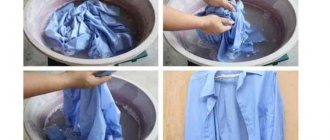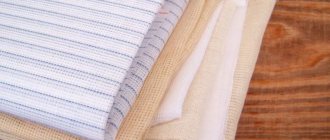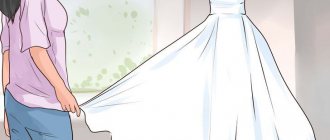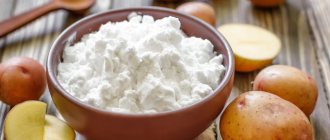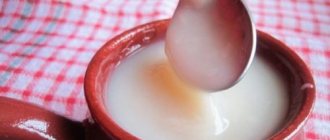The idea of starching a dress may seem like a relic of the past. What immediately comes to mind are the huge basins and pots in which laundry was boiled and then soaked at a time when not every home had a washing machine.
As a result of treating clothing with a starch solution (starch milk), a protective film is formed on the fabric. Contaminants do not penetrate the fibers, remain on the surface and are easily removed with water during further washing.
But in dry cleaners this method of processing fabric is still actively used today, although other substances are used instead of starch. After special processing, wedding and other dresses for special occasions look especially festive and elegant. But you don’t have to spend money – try starching your dress at home.
Why are garments starched?
A starched dress retains freshness and volume longer. For example, in ballet, all tutus are necessarily treated with the mixture before the performance so that they keep their shape and do not “fall” during various steps and ples.
At home, the use of starch is very wide. Previously, after washing, men's shirts, namely, collars and cuffs, were necessarily processed. Children's dresses also went through this procedure to give them pomp and wear. Even snow-white bed linen was dipped into the solution to maintain freshness.
Modern housewives and fashionistas starch things to solve the following problems:
- get a clearer and more voluminous shape;
- prolong the feeling of freshness and lightness;
- ensure that the fabric wrinkles less and does not require constant ironing;
- stiffen collars and cuffs.
A starched knitted skirt stretches less, and the pattern on it looks much more impressive.
Preparation of the solution
You will need the following ingredients: starch - from 5 to 20 grams per liter of water, cold water, boiling water.
The amount of starch depends on how stiff the petticoat should be. If it needs to hold its shape a little better while remaining soft, then five grams will be enough. If you need a rigid frame that can withstand several layers of fabric, 15-20 grams.
livejournal.com
How to prepare laundry
To properly starch a dress, you must follow all the steps. Preparatory procedures include:
- normal washing;
- check for stains.
Tip: if you need to remove a stain from clothing, use hydrogen peroxide by mixing 2 tbsp. and 200 ml of water.
Types of processing
- Soft application is used for delicate and thin fabrics where high rigidity is not required, for example, for summer and knitted items.
- The middle version is prepared for bed linen and clothing made of cotton and linen.
- Hard finishing is used for cuffs, lace, frills and headpieces, as well as for the durability of petticoats and tutus.
Useful tips
Some recommendations will help you avoid many mistakes in starching clothes that can ruin the item:
- When processing a wedding dress, it is better to apply the solution with a sponge only to the petticoats, distributing it evenly,
- It is forbidden to dry such clothes in cold or hot weather, so as not to spoil them,
- a child's dress is starched according to standard instructions, and both one petticoat and the skirt itself can be processed,
- for additional shine of the fabric, add a small amount of table salt or a few drops of melted stearin to the solution,
- knitted items should be dried in a horizontal position after the procedure,
- starch can bleach the fabric, so small stains on the dress will disappear after treatment,
- the thing must be placed in the solution so that it floats freely in it.
You can also starch a child’s dress while washing it in an automatic washing machine. To do this, place the item in the drum and wash it as usual. The starch solution is poured into the conditioner compartment. Naturally, it is better to set the spin cycle to minimum speed.
After completing the procedure, the machine must be started again, but this time idle, so that the remaining starch is washed off. After this, the drum is wiped dry.
How to starch an elegant children's dress
Stages of work:
- wash;
- preparing the starch mixture;
- applying and drying the dress;
- ironing.
How to prepare the solution
A child’s dress requires special attention, because it should not prick after the procedure, so at home, choose one of the following options:
- For a soft version: dilute 0.5 - 1 tsp. starch in 1 liter of water and stir until smooth.
- For medium, 1 tbsp is enough. per 1 liter of liquid. Stir until lumps disappear.
- Strong concentrate: 2 tbsp. l. powder per 1 liter of water, and also add 1 tsp. boric salt (borax), which will give a special shine to the fabric.
The process of preparing “starch water” itself consists of several stages:
- Pour the required amount of starch into a suitable container and add 150-200 ml of cold water. Be sure to stir the mixture thoroughly until the lumps are completely dissolved.
- Boil the remaining portion of water. Add the prepared solution there, stirring constantly. When the liquid becomes homogeneous, the fire must be extinguished.
- Wait for the mixture to cool to room temperature and check the consistency. To do this, dip your hand in a clear solution, after which a slippery mark should remain on the skin.
- Pour all the contents into a washing basin and lower the item there for 1-2 minutes. You can rinse the fabric with your hands so that it is better saturated.
- Remove the clothing, wring it out, and shake it off. Then, leave to dry, first checking that there are no creases or folds in the fabric.
When everything is dry, you can iron and wear the updated outfit.
Ready-made products
Analogs can be found in household chemical stores. Such means reduce the time spent on preparing the mixture yourself. They are divided into two types:
- Spray or aerosol is used to starch collars, laces and other parts of clothing where increased rigidity is needed. Before use, you must read the instructions from the manufacturer. The average price per bottle is 100 rubles.
- Powder or liquid is suitable for tablecloths, petticoats or children's dresses. This product is used as an additional product for automatic washing. The average price per package is 250 rubles.
There is only one drawback to purchased starch compositions - you cannot control the level of hardness of the product obtained. When manually diluting classic starch, you can experiment, choosing the optimal ratio of water and powder for a specific outfit.
Step-by-step instruction
When deciding how to starch a dress at home, choose the simplest and most proven option:
- Prepare the desired consistency from powder and water. It must be warm.
- Place the baby's dress completely in the prepared liquid.
- Take it out and make sure that the starch “water” gets onto all areas of the suit. If there are untouched places, you need to repeat the procedure.
- Wring out and hang to dry on a hanger separate from the rest of the laundry.
After this, you can iron the outfit. As a result, you will get the same beauty as in many photos on the Internet.
How to properly process, dry and iron a petticoat
Often, it is necessary to starch the petticoat of a child's dress. And how to do this so that it retains its shape for a long time is the main question.
Tip: When working with multi-layered fabric, use a spray bottle to cover all layers.
You can dip the petticoat into the prepared warm mixture and rinse the fabric well in water with your hands, apply the solution with a sponge or spray. It should be dried on a hanger, separately from other things.
After drying, the petticoat should be ironed. To do this, be sure to turn off the steam function on the iron and use wet gauze as a layer between the household appliance and the fabric. You need to iron each layer in turn.
Video
Watch a video on how to starch a dress or other item using home remedies to understand the sequence of steps:
Step by step procedure
First step A small amount of water and starch must be mixed thoroughly to avoid the formation of lumps. It is very important that the powder is completely dissolved and the mixture is distributed evenly throughout the fabric. If the solution has a cloudy consistency, you need to boil it over fire for 5 minutes.
It is important that there are no lumps in the starch solution (water + starch). (The powder is first diluted in a small amount of water, stirring until smooth)
Second step After the starch has completely dissolved, pour the remaining boiling water into the container in a thin stream. The mixture should gradually acquire the consistency of liquid sour cream and cool to room temperature. The amount of product and its thickness are adjusted by adding water in small portions.
Third step Before soaking the dress, you need to make sure that it will be completely covered with the resulting liquid. Thirty minutes is enough for the starch to take effect. For the best effect, clothes should be turned over periodically.
Fourth step After treatment, there is no need to rinse the dress in clean water. The clothes are carefully wrung out, trying not to create many folds.
Fifth step Then the dress is shaken and hung on hangers away from heat sources. Under no circumstances should fabric treated with starch be dried on a radiator - it will be very difficult to smooth out wrinkles formed with this drying method.
Sixth step You need to iron the products without waiting until they are completely dry - this will make it easier to achieve an ideal result.
Starched clothes should be protected from water - wet fabric will immediately lose its fluffiness.
How to starch your wedding dress yourself
To treat a wedding dress at home, do the following:
- Before starching, carefully wash the outfit and check that there are no stains or dirt.
- Properly dilute the mixture of medium concentration (1 tablespoon per 1 liter of water). Dip the wedding dress into the warm liquid.
- If the skirt is full, it is better to spray all layers. Then, wring out and hang to dry on a hanger.
- Once dry, iron the dress.
Reviews
Marina
I have to constantly starch tutus because my daughter takes ballet classes. If I don’t have a special German remedy in a “Superform” spray on hand, then I use my grandmother’s methods. For the composition, I use only potato starch, although I heard that you can use rice and corn starch.
Tatiana
Once I starched a dark dress. It was my mistake, after which the item deteriorated, unpleasant stains appeared, which could no longer be removed. Now I use the recipe with gelatin. The composition is prepared quickly. The item holds its shape well after this, but it needs to be dried, as in the traditional method - on hangers.
Julia
I don’t starch dresses, but I am happy to carry out this procedure with knitted items. I make beautiful vases from napkins. The main thing is to give the product the desired shape in time. I just place the napkin on the bottle or vase and wait for it to dry. As a result, I get a beautiful vase.
TOP 7 products for starching
To starch things as quickly and easily as possible, pay attention to the following products:
- It is cheaper and easier to process products with regular starch.
- Aerosols from the Luxus Professional series with different scents. Even dry laundry can be treated with this product to give it shape. Average price 250 rub. for 500 ml.
- Citico - added when washing any items in the washing machine. Can also be used for hand washing. Cost about 400 rub. for 1 l.
- Sano Iron Starch – starch, 0.7 l volume. Used instead of steam when ironing, it gives things freshness and durability. But less effective than regular starch.
- Yplon Expert is an aerosol, sold in a can. Average price 130 rub. Suitable for petticoats and multi-layered products.
- Reinex is the most affordable ironing spray product. The cost is only 90 rubles. for one jar.
- For washing you can use Domal. It features economical solution consumption and good results.
There are many other ironing, washing and spraying products in the household chemicals department, so choosing the right option will not be difficult.
Alternative Methods
There are other ways to achieve a similar result. However, the use of these technologies has not only advantages, but also disadvantages.
Sugar
A strong sugar solution is traditionally used to shape the product. To prepare it, granulated sugar is mixed with warm water until the granules are completely dissolved. The amount of sweet component is adjusted independently depending on the desired result. The product is immersed in the composition until completely wet, then carefully squeezed out and dried, having previously given the required shape. Sugar allows you to achieve high hardness, but:
- may cause an unpleasant odor;
- causes a feeling of stickiness and untidiness;
- can become a real bait for insects.
Sugar should be used to give shape to knitted decorative items, lace, and cord baskets. For clothes, it is better to choose another product, for example, the same starch.
A few important nuances
You can starch any products and fabrics except:
- underwear - the fabric becomes almost waterproof, and therefore less hygienic for the body. In this case, you can starch individual parts - the collar, button area or ruffles.
- things made of black threads, because there will be white spots on them;
- clothing made entirely or partially from synthetic fibers.
The procedure is suitable for petticoats, wedding and evening dresses, knitted dresses, as well as items made from natural fabrics, such as linen or cotton.
Drying
The solution must dry. To do this, place the dress or skirt on a hanger and straighten out all the details. This must be done, since the folds freeze. It will be difficult to straighten them out. Do not blow dry or place the item in a room where it is very hot. It is recommended to dry at room temperature. Cannot be placed on the balcony, especially in frosty weather.
While the dress is not yet dry, it is ironed. This way it will be easy to shape the outfit. If the outfit is already completely dry, it is moistened with water and then ironed.

